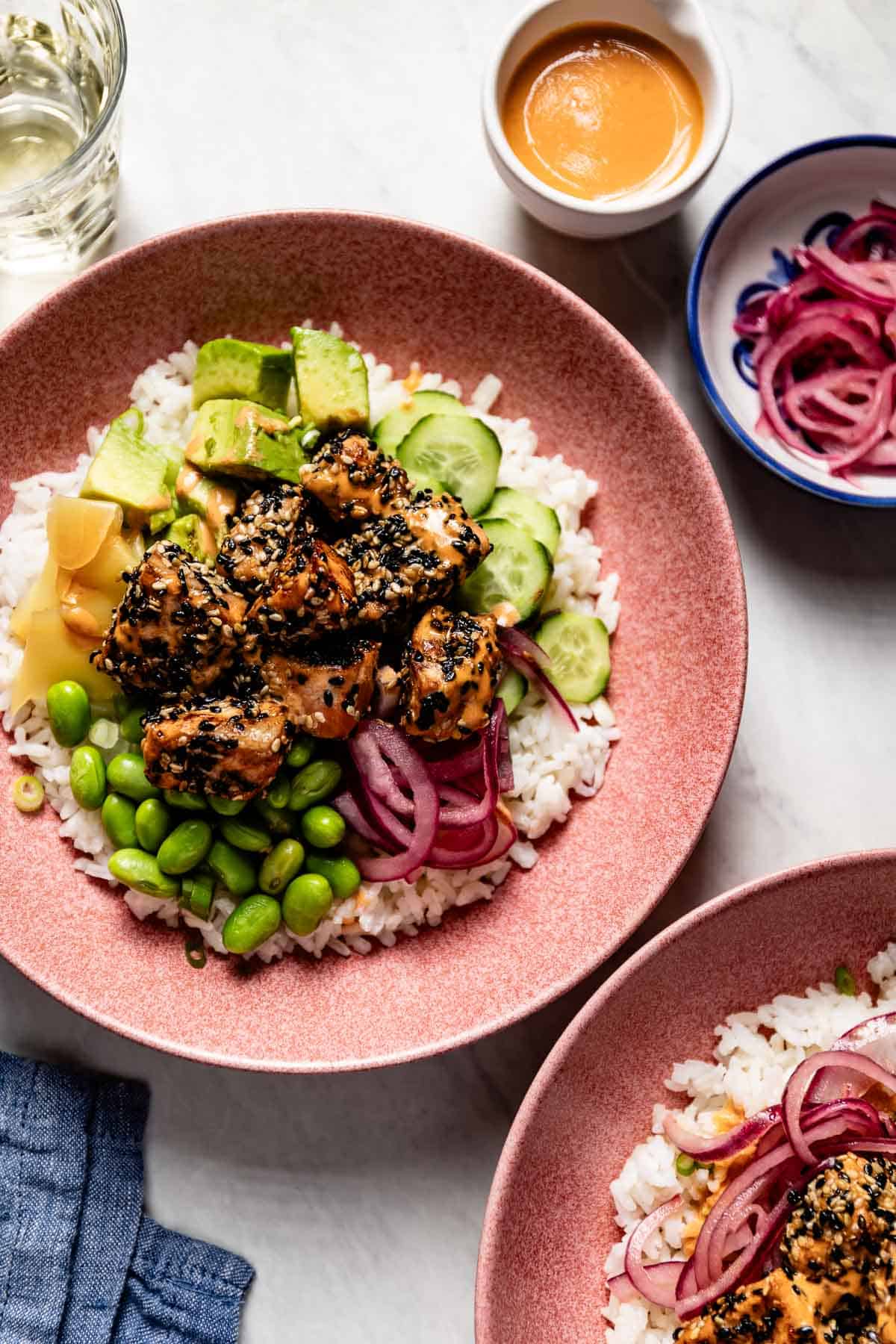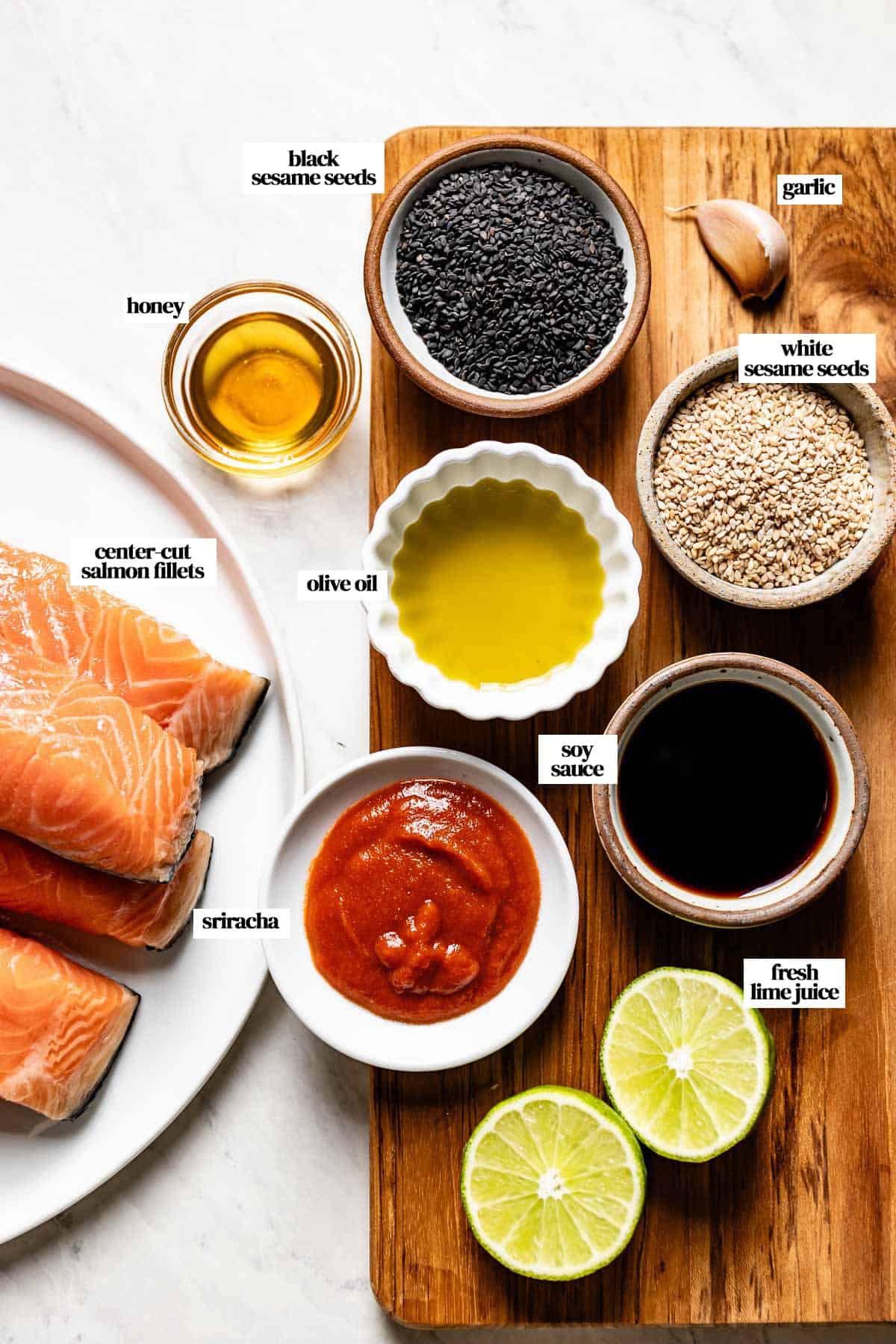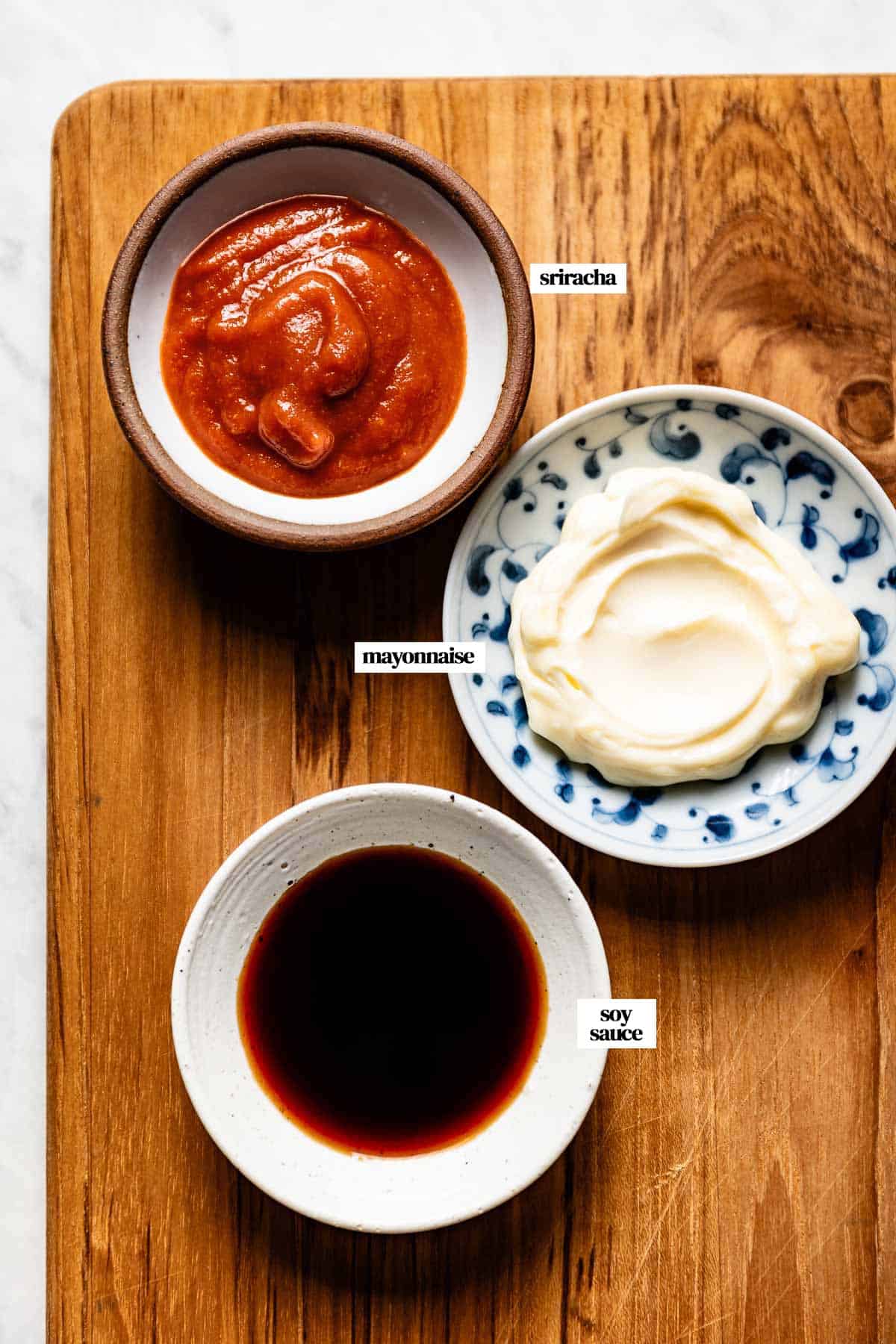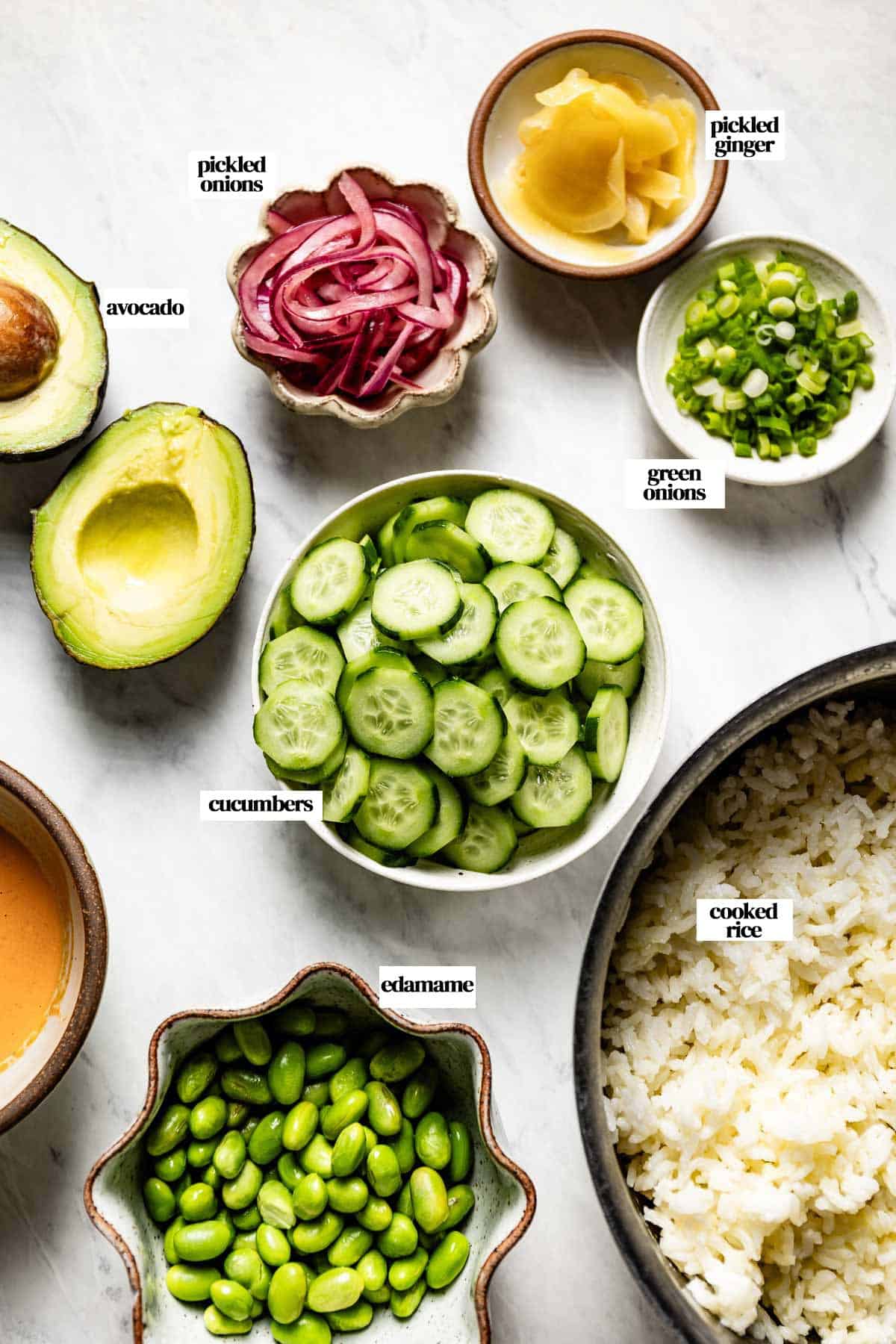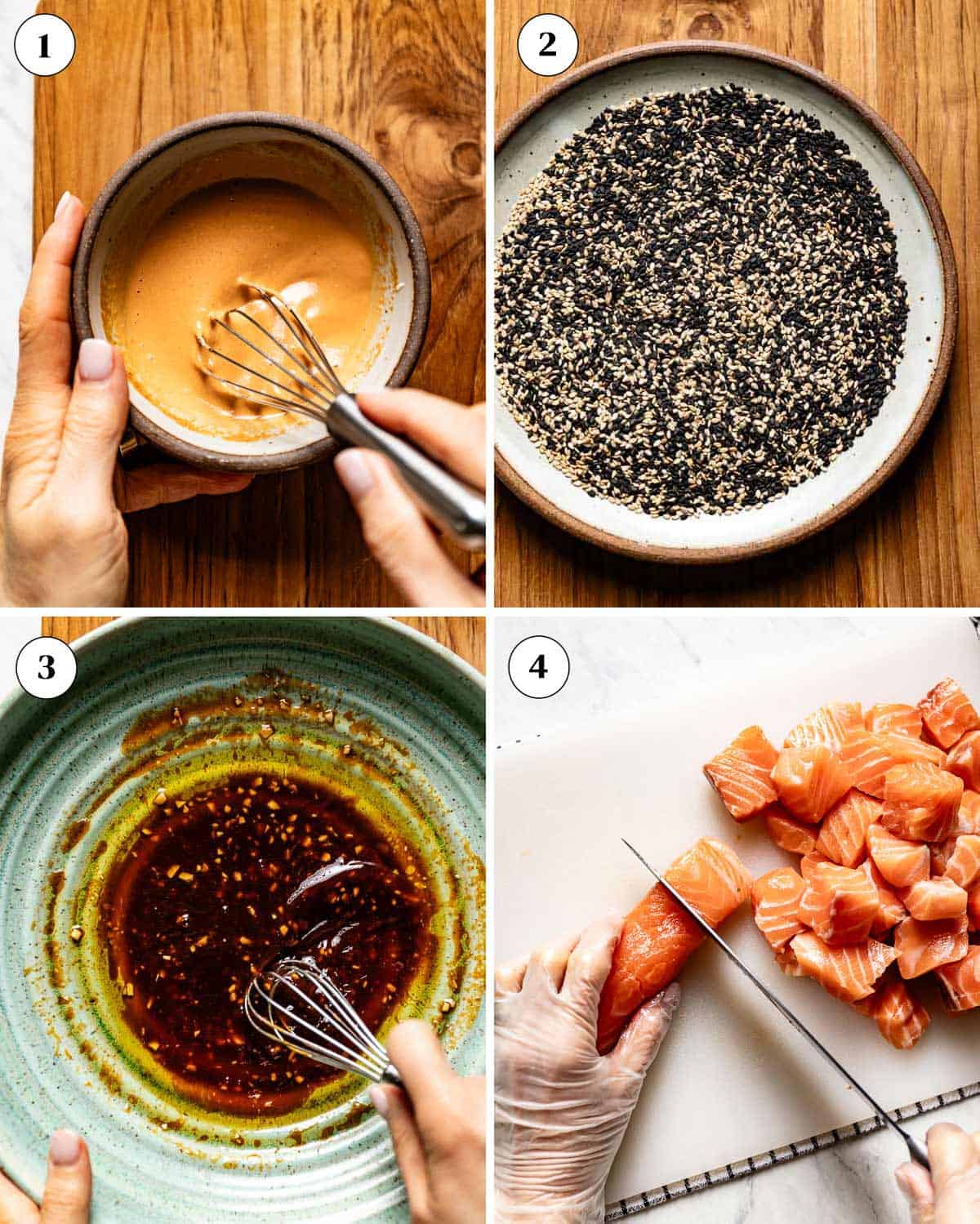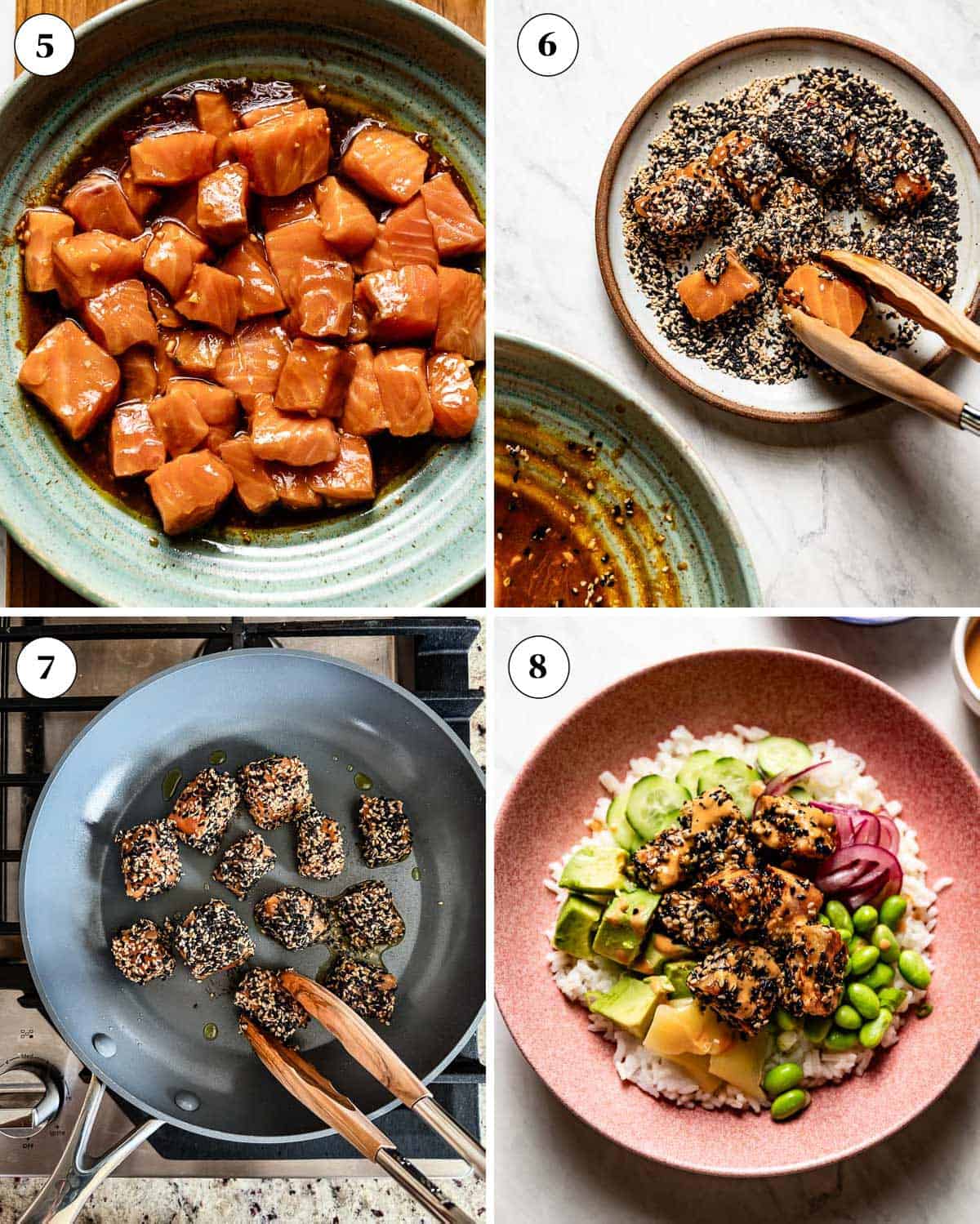If you love salmon as much as we do, be sure to also make Baked Sockeye Salmon and Salmon Nicoise. No matter which adventure you choose, all the ingredients are easy to find these days at the grocery store. Here’s a bit more detail about what we need:
For the Sesame Salmon
The key to delicious fresh salmon bowls is the right balance of flavors. We will need the following:
Salmon: Look for a center-cut salmon filet for even thickness (about a 1-inch-thick fillet). If the salmon has the skin-on, either remove it when you get home or ask the fishmonger to do it for you. If you can find it, go for Wild Alaskan or fresh Atlantic salmon, which is the best quality. Sesame seeds: A combination of white and black sesame seeds provides a visual contrast to the salmon’s orangey-pink hue, along with a nutty richness and great crunch. If you only have one color on hand, that works, too. Olive oil: I prefer the milder flavor of olive oil to toasted sesame oil, as I feel the sesame oil overpowers the sesame seeds, but either one will work. Avocado oil is a good substitute, too. Soy sauce: Soy sauce adds that special salty, umami bite. Use low-sodium soy sauce or tamari for gluten-free. Coconut aminos is another great sub if you want to keep the recipe soy-free. Sweetener: Honey or brown sugar balances the salty, spicy notes. Coconut sugar is another good alternative. Lime Juice: For a nice citrus kick, use either freshly squeezed lime juice or lemon juice. Rice vinegar can replace the acid in the marinade. Garlic: One fresh garlic clove gives it a nice, punchy, aromatic flavor. Sriracha: Sriracha adds both tang and spice. Other options include Sambal Oelek (chili garlic sauce) or Gochujang (aka Korean pepper paste.)
Mayonnaise: I like avocado oil mayonnaise, but any mayo you have on hand will work. Sriracha: I used a small amount of Sriracha, but you can always increase it to make it spicier. Soy sauce: Soy sauce adds a salty kick. As mentioned, you can use tamari or coconut aminos instead.
For the Bowl
Now, for some color! If you decide to make sesame salmon bowls, here are my favorite accompaniments:
Rice: Fluffy white rice is a comforting bed and makes it into a rice bowl. You can make regular long-grain white rice, Jasmine rice, sushi rice, or jasmine brown rice. Or, think outside the box and go low-carb with cauliflower rice or Stovetop Quinoa for extra protein. Avocado: Creamy avocado adds color, fat, and fiber. I like to cut it into cubes roughly the same size as the salmon, but slices work, too. Cucumber: Slice up a regular cucumber or a few small cucumbers for a layer of freshness. Scallions: A final flourish of green onion compliments those Asian flavors. Fresh cilantro or fresh basil would be a nice addition, too. Edamame: I like the frozen shelled edamame beans for ease, but you can also use edamame in the pod if preferred. Picked vegetables: Store-bought pickled ginger, and Pickled Red Onions are like the secret weapon that takes the sesame soy salmon bowl recipe to another level. Make sure to have extra pickled vegetables handy because there will never be enough.
Storage: Store the salmon and the respective bowl ingredients in individual airtight containers for maximum freshness. Or, assemble the bowls in meal prep containers. The salmon and assembled bowls will keep for up to 2 days. The good news is that this salmon with sesame seeds can be enjoyed cold or warm. Reheat: If you prefer your salmon sesame recipe warm, reheat the salmon on a sheet pan in a low oven (about 275 degrees F) until just heated through, no longer than 4-5 minutes. The low-temperature oven prevents the salmon from overcooking.
If you try this Sesame Crusted Salmon recipe or any other recipe on Foolproof Living, please take a minute to rate the recipe and leave a comment below. It helps others who are thinking of making the recipe. And if you took some pictures, be sure to share them on Instagram using #foolproofeats so I can share them on my stories.
Remove salmon skin: If you have purchased salmon with the skin on, you can remove the salmon skin yourself before cooking or ask the fishmonger to do it for you. Do not marinate the salmon for too long: Do not marinate the salmon for more than 10 minutes, or you risk cooking it in acidic juices, which can alter the texture and cooking time. Preheat the skillet: Make sure to preheat the skillet with the oil for at least 2 minutes before beginning to sear the salmon. You will know it’s ready when the oil shimmers and you just start to see smoke emerging from the oil. Salmon cooks very fast: The cubed salmon cooks in 2-3 minutes. Depending on the size of the cubes, I like to cook it for a full 1 minute on the first sear and then 30 seconds for each remaining side. Prep and cook the other ingredients: Since the salmon cooks so fast, make sure the rice is cooked and the vegetables are prepped. Then all you have to do is sear, flip, and assemble.

